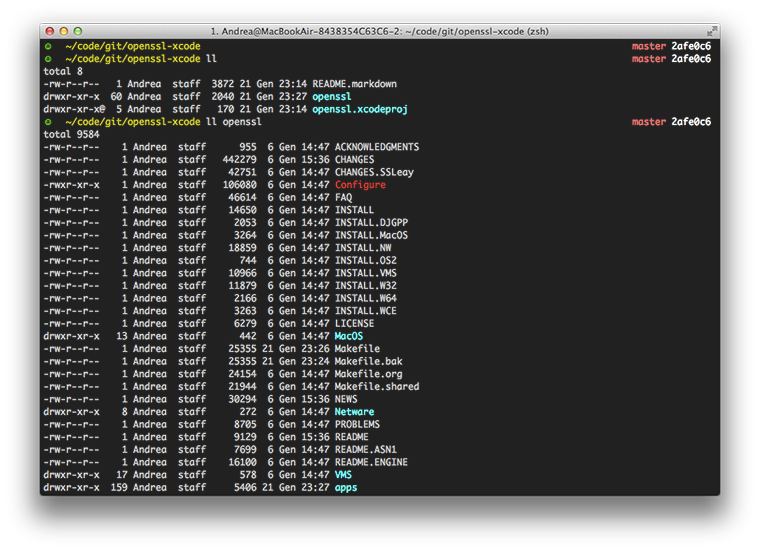
#Openssl cmac code
Crystal implementation of the Cipher-based Message Authentication Code (CMAC) (by spider-gazelle) Cryptography. Phillip Rogaway's statement on intellectual property status of CMAC cmac VS OpenSSL Compare cmac vs OpenSSL and see what are their differences. Python implementation: see the usage of the AES_CMAC() function in " impacket/blob/master/tests/misc/test_crypto.py", and its definition in " impacket/blob/master/impacket/crypto.py".Check that the generated tag is equal to the received tag.Use the above algorithm to generate the tag., n − 1, calculate c i = E k( c i−1 ⊕ m i). If m n is a complete block then m n′ = k 1 ⊕ m n else m n′ = k 2 ⊕ ( m n ∥ 10.0 2).

(The empty message is treated as one incomplete block.)
#Openssl cmac mac

(Specifically, C is the non-leading coefficients of the lexicographically first irreducible degree- b binary polynomial with the minimal number of ones: 0x1B for 64-bit, 0x87 for 128-bit, and 0x425 for 256-bit blocks.) If msb( k 0) = 0, then k 1 = k 0 ≪ 1, else k 1 = ( k 0 ≪ 1) ⊕ C where C is a certain constant that depends only on b.Calculate a temporary value k 0 = E k(0).Let ≪ denote the standard left-shift operator and ⊕ denote bit-wise exclusive or: To generate an ℓ-bit CMAC tag ( t) of a message ( m) using a b-bit block cipher ( E) and a secret key ( k), one first generates two b-bit sub-keys ( k 1 and k 2) using the following algorithm (this is equivalent to multiplication by x and x 2 in a finite field GF(2 b)). The OMAC algorithm reduces the amount of key material required for XCBC. They later submitted OMAC1, a refinement of OMAC, and additional security analysis. Iwata and Kurosawa proposed an improvement of XCBC and named the resulting algorithm One-Key CBC-MAC ( OMAC) in their papers. The XCBC algorithm efficiently addresses the security deficiencies of CBC-MAC, but requires three keys. The core of the CMAC algorithm is a variation of CBC-MAC that Black and Rogaway proposed and analyzed under the name XCBC and submitted to NIST. This mode of operation fixes security deficiencies of CBC-MAC (CBC-MAC is secure only for fixed-length messages).

It may be used to provide assurance of the authenticity and, hence, the integrity of data. In cryptography, CMAC is a block cipher-based message authentication code algorithm.
#Openssl cmac free
It is free for all uses: it is not covered by any patents. OMAC1 is equivalent to CMAC, which became an NIST recommendation in May 2005. Officially there are two OMAC algorithms (OMAC1 and OMAC2) which are both essentially the same except for a small tweak. One-key MAC ( OMAC) is a message authentication code constructed from a block cipher much like the CBC-MAC algorithm. For other uses, see CMAC (disambiguation). RaisesĬryptography.exceptions."CMAC" redirects here.

The message authentication code as bytes. TypeError – This exception is raised if signature is notįinalize the current context and return the message authentication codeĪfter finalize has been called this object can no longer be usedĪnd update(), copy(), verify() and finalize() Signature ( bytes) – The bytes to compare the current CMACĬ – If signature does not RaisesĬ – See finalize() verify ( signature ) ¶įinalize the current context and securely compare the MAC to ReturnsĪ new instance of CMAC that can be updatedĪnd finalized independently of the original instance. To call update() on the original instance. TypeError – This exception is raised if data is not bytes.Ĭopy this CMAC instance, usually so that we may callįinalize() to get an intermediate value while we continue TypeError – This is raised if the provided algorithm is not an instance ofĬ – This is raised if theĭata ( bytes) – The bytes to hash and authenticate. verify ( b "an incorrect signature" ) Traceback (most recent call last).
#Openssl cmac update
update ( b "message to authenticate" ) > c. On 6/18/20, 12:46, openssl-users on behalf of Kurt Roeckx wrote: On Thu, at 10:41:40AM +0200, Tomas Mraz wrote: > I question the default.


 0 kommentar(er)
0 kommentar(er)
